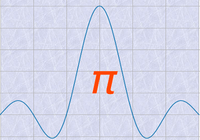simpleFE is a low-cost, open source, easy-to-use mixed-signal frontend. It is built to serve as a versatile bridge, performing high speed analog-to-digital and digital-to-analog conversions.
simpleFE frees your development team from the need to design, manufacture, and deploy complex digital and mixed circuits. By transparently streaming data over a USB 2.0 interface to and from the host system, simpleFE allows every bit of digital signal processing to take place on that host, which eliminates the need to port logic to an FPGA or DSP. As a result, engineers can focus on signal processing algorithms and software. This not only accelerates the prototyping phase of many projects, it shortens development cycles between iterations.
Having said that, if you are looking to develop custom embedded software, you can’t go wrong with the Lattice iCE40 at the heart of simpleFE. It’s an extremely popular, well-documented chip supported by a fully open source toolchain. Just because you’re learning doesn’t mean you have to spend your time making LEDs blink on and off. And if you do have experience with Lattice FPGAs, so much the better. simpleFE gives you the opportunity to utilize those skills for specialized, high-performance DAC and ADC applications.
Because of its small form-factor, simpleFE can be used as a data conversion module, interfacing directly with a Single-Board Computer (SBC) such as a Raspberry Pi. This makes it easy to deploy in the field and allows you to begin validating your entire system at an early stage in order to reduce the risk of failure. simpleFE does not include any anti-aliasing or reconstruction filters, which makes it suitable for a wide range of applications. All you need to do is design simple, application-specific analog circuits.
simpleFE is open hardware, designed in KiCad, driven by fully open source software, and is ready to work with GNURadio and other signal processing libraries that give you full control over the signal chain. This makes simpleFE ideal for learning, prototyping, and direct in-field implementation.
You can find the simpleFE documentation in our GitHub repository. If you have a technical question, you can reach out to us here. For inquiries related to orders and shipping, please contact Crowd Supply.
simpleFE will be assembled in China and tested in Australia. The current lead time is about three weeks, and shipping from China to Australia via DHL or FedEx will likely add another week. We estimate another three weeks to bring up and test the boards, after which they will be shipped to Crowd Supply for fulfillment. All told, and with a bit of a buffer, we expect units to be on their way to backers approximately three months after the end of the campaign.
All products will be shipped by Crowd Supply from their facility in the United States. For more information, please see their ordering, paying, and shipping guide.
Our biggest concern is that the shipment from China to Australia might take longer than expected. Other than that, as with any hardware product, there’s a chance that component availability will be worse than expected, or that the manufacturer makes an unexpected error. These possilibites have been mitigated as much as possible in advance of production. If we encounter any manufacturing or shipping challenges, we will of course let you know though campaign updates.
"Designed primarily to carry out analog-to-digital and digital-to-analog conversion, simpleFE includes plenty of IO and allows you to create your own signal processing system more quickly, more easily, and more cost-effectively."
Produced by Ning Wang in New South Wales, Australia.
Sold and shipped by Crowd Supply.

One simpleFE mixed-signal frontend.

I am a DSP engineer with a passion for communication and control circuits. I like home brew electronics and maintain a blog on the basics of signal processing and communication.

A low-cost dev kit for Microchip's PolarFire SoC, a low-power FPGA integrated with a hardened quad core 64-bit RISC-V microprocessor subsystem

A Software-Definable RF Front End Module for LimeSDR Platforms

A tiny, single-sided M.2 SDR board that you can operate easily using your web browser